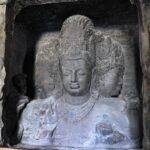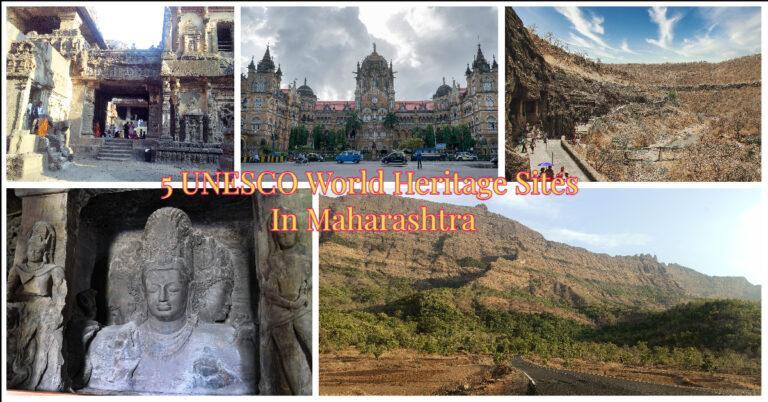Hello, everyone! Welcome to the Maharashtra Discovery blog, where we take you on a fascinating journey through the amazing culture and nature of Maharashtra. Today, we will explore the special places in Maharashtra that have been recognized by UNESCO as UNESCO World Heritage Sites. These UNESCO World Heritage sites in Maharashtra have a rich history and stunning natural beauty. As someone who loves to explore, I have personally visited some of these remarkable places like Ellora Caves, Chhatrapati Shivaji Terminus, and the Western Ghats. In this blog, I’ll share my own experiences at these fantastic destinations and give you a sneak peek of what’s to come when I explore Elephanta and Ajanta Caves in the future.
UNESCO stands for the United Nations Educational, Scientific, and Cultural Organization. It is a specialized agency of the United Nations established in 1945 with the mission to promote international collaboration in education, science, culture, and communication. UNESCO aims to protect and preserve the world’s cultural and natural heritage, foster global education initiatives, promote freedom of expression, and advance scientific research for the collective benefit of humanity. UNESCO World Heritage Site is a special place, like a building, mountain, or forest, that is recognized by UNESCO as having great value for all people on Earth.
Ellora Caves

Ellora Caves, located near Aurangabad in Maharashtra, are a group of 34 ancient monasteries and temples carved into a high basalt cliff. These magnificent caves span over 2 km and date back to AD 600 to 1000. The Ellora complex showcases the civilization of ancient India, where followers of Buddhism, Hinduism, and Jainism worked together, showing a spirit of coexistence and religious tolerance.
The caves were carved in three phases. The first phase (caves 1-12) reflects the Mahayana Buddhism philosophy, while the second phase (caves 13-29) includes the famous Kailasa Temple and represents Hinduism. The last phase (caves 30-34) is dedicated to Jainism. Each group of caves showcases intricate sculptures and paintings, offering a glimpse into the religious and cultural practices of that time.
Among the Buddhist caves, Cave 10, Cave 11, and Cave 12 hold particular significance as they depict Vajrayana Buddhism and feature various Buddhist deities. The Hindu caves, especially Cave 16 (Kailasa Temple), display remarkable rock-cut architecture with elaborate sculptures and paintings. Cave 16 is an excellent example of human creativity and innovation.
The Jaina caves (caves 30-34) are delicately carved, with exquisite sculptures and paintings dedicated to the Digambara sect. Together, the Ellora Caves provide a window into ancient India’s socio-cultural phenomena, material culture, politics, and lifestyles.
The caves were added to UNESCO world heritage site list for several reasons. Firstly, they are a unique artistic achievement, displaying an outstanding level of creativity and skill. Secondly, the caves offer a glimpse into the ancient Indian civilization, with monuments dating back to over a thousand years. Lastly, the three religions coexisted and established their sanctuaries in one place, emphasizing their universal value.
To protect and maintain the site’s integrity, the Archaeological Survey of India (ASI) manages the Ellora Caves, along with the Forest Department and the Government of Maharashtra, overseeing the buffer zones. Various laws and acts govern the administration of the property and its surroundings. However, some potential threats, such as visitor and environmental management, seepage, and cracking in the caves, require attention.
To sustain the Outstanding Universal Value of the Ellora Caves, a comprehensive conservation management plan is being implemented. This plan includes monitoring the condition of the caves, addressing visitor and environmental management issues, and building the capacity of conservation staff to protect the property’s attributes, integrity, and authenticity for future generations.
Ajintha Caves

The Ajanta Caves, an extraordinary UNESCO World Heritage Site, holds a remarkable historical and artistic significance. These ancient caves are situated on a vertical cliff above the river Waghora in the hills of Ajanta. There are thirty caves in total, including the unfinished ones, out of which five are chaityagrihas or sanctuaries, and the rest are sangharamas or monasteries.
The caves were carved in two different phases, separated by about four centuries. The first phase was during the rule of the Satavahana dynasty, from the 2nd century BCE to the 1st century BCE. These caves, numbering six, were created by Hinayana or Theravadin followers of Buddhism, and they worshiped Buddha in a symbolic form. The chaityagrihas have vaulted ceilings and a horseshoe-shaped window known as chaitya window. The monasteries consist of an astylar hall for congregation and dwelling apartments for monks.
In the second phase, during the 5th to 6th centuries CE, the caves were dominated by Mahayana followers of Buddhism, and they worshiped Buddha in an idol form. The earlier caves were reused, and new ones were excavated, showcasing renewed architectural and sculptural fervor. The walls were adorned with exquisite mural paintings, executed in tempera technique, and the pillars, door jambs, and facades were richly decorated with sculptures.
Ajanta Caves is an outstanding example of ancient Buddhist rock-cut architecture. It is a unique and influential artistic achievement, with its style even extending to places like Java. The caves provide exceptional testimony to the evolution of Indian art and the role of Buddhism during the Satavahana and Vakataka dynasties.
The site is well protected and managed by the Archaeological Survey of India (ASI), along with other stakeholders. The property’s integrity is preserved, and efforts are made to address potential threats and ensure its authenticity. Measures are being taken to control visitor pressure, monitor cave structures, and build staff capacity for conservation and management.
The Ajanta Caves stand as a testament to the artistic and spiritual richness of ancient India, drawing visitors from around the world to witness its magnificence and understand the historical and religious significance it holds.
The Chhatrapati Shivaji Maharaj Terminus, earlier known as Victoria Terminus, is an incredible building in Mumbai, India. It was designed by F. W. Stevens and took 10 years to build, starting in 1878. This beautiful railway station is spread over a large area and serves more than three million commuters every day.
The Chhatrapati Shivaji Maharaj Terminus is an extraordinary railway station, displaying a fusion of British, Italian, and Indian architectural styles. It showcases intricate 3D stone carvings of animals, flora, and fauna, along with impressive arches and beautiful rose windows. The building is made of various materials like yellow malad stones, Italian marble, polished granite, and white limestone, adding to its splendor.
The station’s architecture is a perfect example of Victorian Gothic Revival, which was a popular style in England during that time. It also incorporates elements of Indian traditional architecture, making it a unique blend of two cultures. The splendid stone dome, turrets, pointed arches, and unusual ground plan have similarities with Indian palace architecture.
The station is a historic symbol of Mumbai as a major port city and a significant commercial hub during the British colonial era. It reflects the economic prosperity of city at that time.
Although there have been some changes inside and outside the station, the core structure remains intact. Efforts are made to preserve and restore the building to its original glory. It has been declared a “Heritage Grade-I” structure by the Maharashtra State Government and is protected under heritage legislation.
The administration and maintenance of the Chhatrapati Shivaji Maharaj Terminus lie with the Divisional Railway Manager, Mumbai Division of Central Railway. There are ongoing efforts to decongest the station and improve the surrounding areas.
A long-term management plan was initiated in 1997 by Indian Railways through the Architectural Conservation Cell (ACC). The plan includes restoration work, traffic management, tourism, and personnel training. The funds for the station’s upkeep are provided by the Indian Government, and Indian Railways have a system to allocate funds for conservation work.
Overall, the Chhatrapati Shivaji Maharaj Terminus is a remarkable architectural marvel that preserves the fusion of cultures and stands as a symbol of Mumbai’s historical and cultural heritage. Efforts to protect and manage this iconic station ensure its legacy lives on for future generations to appreciate and admire.
The Western Ghats

The Western Ghats, also known as the Sahyadri mountain range, older than the Himalayas, are a chain of mountains running along India’s western coast. They are very special because of their unique influence on the weather and climate in the region. The Ghats play a significant role in the Indian monsoon system, making the tropical climate of the area more moderate. This makes the Western Ghats a great example of the monsoon system worldwide.
Apart from their climatic importance, the Western Ghats are also a treasure trove of biodiversity. They are home to a vast variety of plants and animals found nowhere else on Earth. This makes them one of the eight ‘hottest hotspots’ of biodiversity in the world. Within the Ghats, you can find beautiful forests with many unique plant species, some of which are under threat of extinction. There are also several animals, like amphibians, reptiles, and fishes, which are globally threatened. The Ghats are truly a haven for nature lovers and a crucial place for protecting endangered species.
The Western Ghats have a long history that goes back to the ancient times. They are evidence of the earth’s geological changes, such as the breakup of the ancient landmass and the formation of India as an isolated land. Due to these changes and the favorable weather patterns, many new species of plants and animals evolved in the Ghats. This makes the Western Ghats a vital place for understanding the movement and evolution of species over time.
The Western Ghats are so vast and diverse that they cannot be represented by just one protected area. Instead, they are divided into 39 smaller parts, grouped into 7 sub-clusters. Each part is unique and tells its own story of the Ghats’ richness. The protection and management of these parts are done through strict laws and regulations, ensuring that they remain safe and preserved for the future. The involvement of local communities in managing these areas is also essential, and their livelihood concerns are taken into account.
Overall, the Western Ghats are of immense global importance for their biodiversity, geological significance, and influence on weather patterns. Preserving and managing these mountains is crucial for the conservation of unique species and the well-being of the people and ecosystems they support.
Elephanta Caves:

The Elephanta Caves, also known as the ‘City of Caves,’ are located on Elephanta Island near Mumbai, in Western India. These ancient caves hold a mesmerizing collection of rock art connected to the worship of Lord Shiva. Dating back to around the 5th to 6th centuries AD, these remarkable caves showcase some of the finest examples of Indian art and architecture.
The main attraction, Cave 1, houses a magnificent 7-meter-high sculpture of “Sadashiva,” representing Shiva as the Creator, Preserver, and Destroyer. Other impressive sculptures include Nataraja, Yogishvara, Ardhanarishwara, and more, each displaying unique forms and stories. The layout and design of the caves, with their sanctum and grand pillars, show significant advancements in rock-cut architecture.
Elephanta Caves have earned their place on UNESCO World Heritage site List for several reasons. Firstly, the fifteen large sculptures surrounding the Shiv linga in the main cave are considered one of the greatest examples of Indian art, specifically devoted to the cult of Lord Shiva. Secondly, these caves are a pinnacle of rock-architecture in western India, showcasing colossal sculptures and artistic creations of unparalleled beauty.
Preserving the integrity of the Elephanta Caves remains crucial. Efforts are needed to protect the archaeological components in their natural settings, address saline activity and deterioration of the rock surfaces, and safeguard the site from nearby industrial development. The Archaeological Survey of India takes primary responsibility for managing and protecting the caves, supported by other departments under various legislations.
To sustain the outstanding universal value of the Elephanta Caves, a comprehensive Conservation Management Plan is essential. This plan will guide restoration and conservation efforts, address structural issues in the caves, and ensure scientific standards are followed. Additional resources, technical expertise, and funding are required to conserve this extraordinary site and protect its rich archaeological heritage for generations to come.
As I finish talking about the special places in Maharashtra recognized by UNESCO, I am reminded of how much history, culture, and nature this state has. These sites show how Maharashtra has a rich and beautiful heritage. I am excited about my upcoming trips to Elephanta and Ajanta Caves, where I hope to find exciting things. Maharashtra is like a precious gem in India because it has so many different wonders. I invite all of you to explore and enjoy the beauty of this state. Until we meet again, happy exploring!
Explore Best Place to Visit in Monsoon in Maharashtra – https://maharashtradiscovery.com/best-places-to-visit-in-monsoon/
Explore Maharashtrian Food Items – https://maharashtradiscovery.com/category/cuisine-and-food-culture/
Join our Facebook page to get updates new blogs – https://www.facebook.com/profile.php?id=100094690564721

1 thought on “Explore Maharashtra’s 5 UNESCO World Heritage Sites”